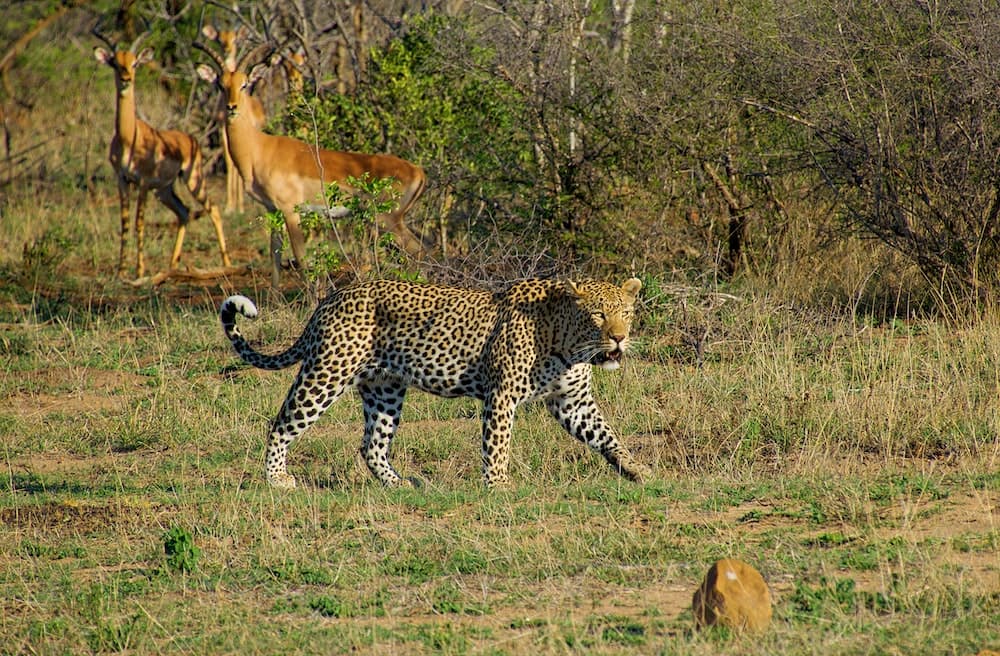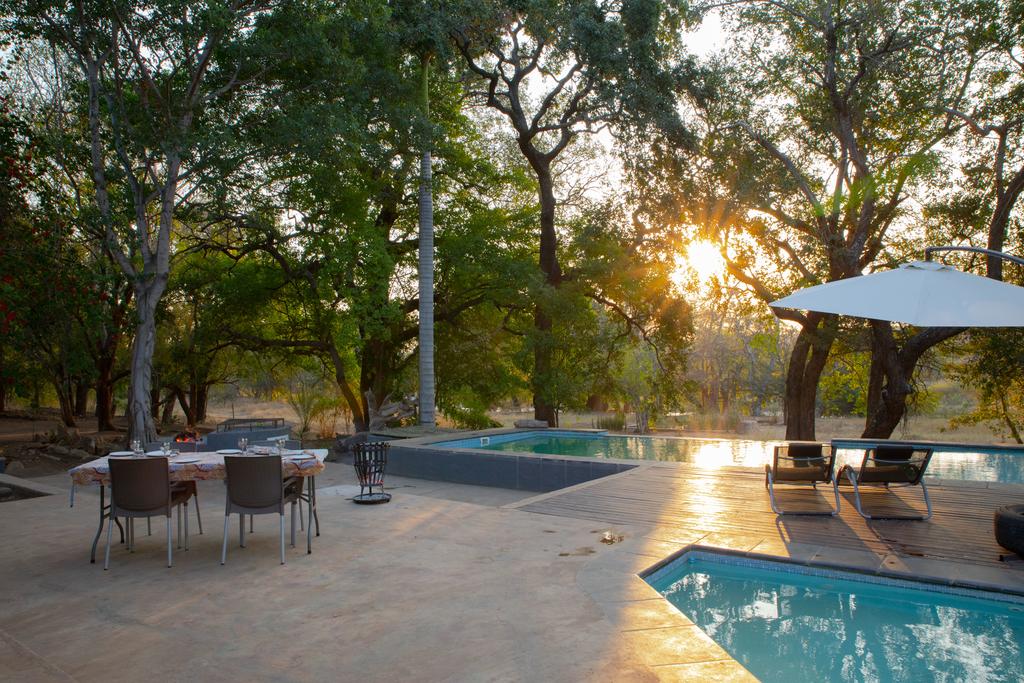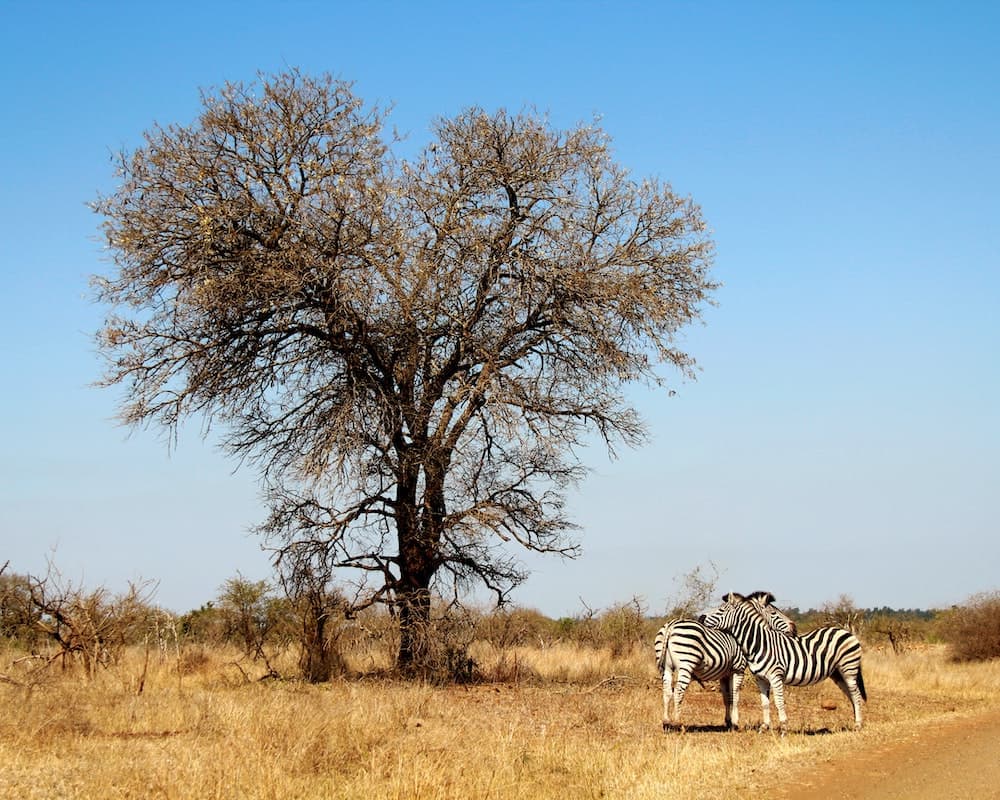Visit Kruger Park
Disclosure: Bear in mind that some of the links in this post are affiliate links and if you go through them to make a purchase we will earn a commission at no additional cost to you. We chose these companies / hotels because of their quality and not because of the commission we receive from your purchases.
If you are going to South Africa then please do not skip the Kruger Park. It is one of the most beautiful and largest safari parks in the world. You see grazing wildebeest, chattering elephants and maybe even a troop of sleeping lions. On foot or by car, under the guidance of an experienced ranger, you follow the traces of the past night. An experience so memorable that it is worth adding to your bucket list.
The Kruger National Park is home to the BIG 5, another 140 different species of mammals, countless bird species and reptiles. The BIG 5 does not refer to the five largest animals, but to five trickiest large wild animals to hunt on foot. The BIG 5 consists of the elephant, the rhinoceros, the buffalo, the lion and the leopard. 
The Kruger Park is 380 km (236 miles) long and 60 km (37 miles) wide. The park currently has a total area of approximately 20,000 km2 (7722 mi²) and it is still growing. Large parts of Mozambique and Zimbabwe are drawn back to the park, which will restore the natural migration of many animals. The Kruger Park consists of two parts: the Kruger National Park and the Greater Kruger National Park (these are the private reserves). The Kruger National Park (or Kruger Park) is managed by the government. All lodges, restaurants, activities and prices in the park are therefore determined by the South African government.
The Greater Kruger National Park (GKNP) borders directly on the Kruger Park, usually without fences or boundaries and is privately owned by people and / or companies. The Greater Kruger National Park is often called a private reserve or private game reserve. The animals still roam freely and can hang out in both the Kruger Park and at a private reserve. In a private reserve you get a more unique safari experience, better service and private game drives (jeep safaris) where you can get closer to the animals because you can drive off-road.
How to get there
Before you make a safari in the Kruger Park, it is important to consider how to get there. From Johannesburg it is a 500 kilometer drive to the Malelane Gate or the Crocodile Bridge Gate, two of the entrance gates to the park. A lot of people also tend to visit Hoedspruit which is 450 km (279 miles) from Johannesburg and stay there for a few nights while on Safari. You have the opportunity to go on an organized trip tour or rent a car from Hoedspruit.
Where to stay
Located on the banks of the Oliphants River, Southern Sands Eco Lodge offers tents accommodation in the Ndlovumzi Nature Reserve. We highly recommend this eco lodge. The tents are great, modern and tastefully furnished in the middle of nature. We also loved their pool, such a welcome treat after a day of exploring.
With very warm hosts you would want to stay here forever. On booking.com they get a well deserved average rating of 9.6.
Best time to visit
The good thing about South Africa is that you can actually go there all year round. So a holiday to South Africa is always a good idea, both in the African summer and in winter. Of course, depending on the 'purpose' of your vacation.
South Africa has four different seasons, although the difference between the seasons is usually not as clear and visible as in for example Europe. The Kruger Park has a savannah climate. The average temperature is around 30 degrees Celsius (86 degrees Fahrenheit) all year round. If you prefer not to have rain during your safari then May to September is ideal. There is relatively little rain and the temperatures are pleasant to go out.
The chance that you see the entire Big Five is a little higher in winter (June - August). Through dry periods, temporary water sources become exhausted and the animals migrate to rivers or ponds. In addition, there are often less leaves on the trees during this period, making the animals more visible.
In summer (December - February) the temperature in the Kruger Park is higher. The chance of a strong storm is also the highest in this period. Because of these showers the humidity is high, also the South Africans themselves have summer holidays in the months of December and January. Which means it is often busier in the Kruger Park.
During autumn and spring (September - November and March - May) it is usually a little quieter with visitor numbers and the climate is less humid than in summer. In addition, the days and nights are pleasant in terms of temperature. An ideal climate for safaris or bushwalks. Click here for more climate details about Hoedspruit.